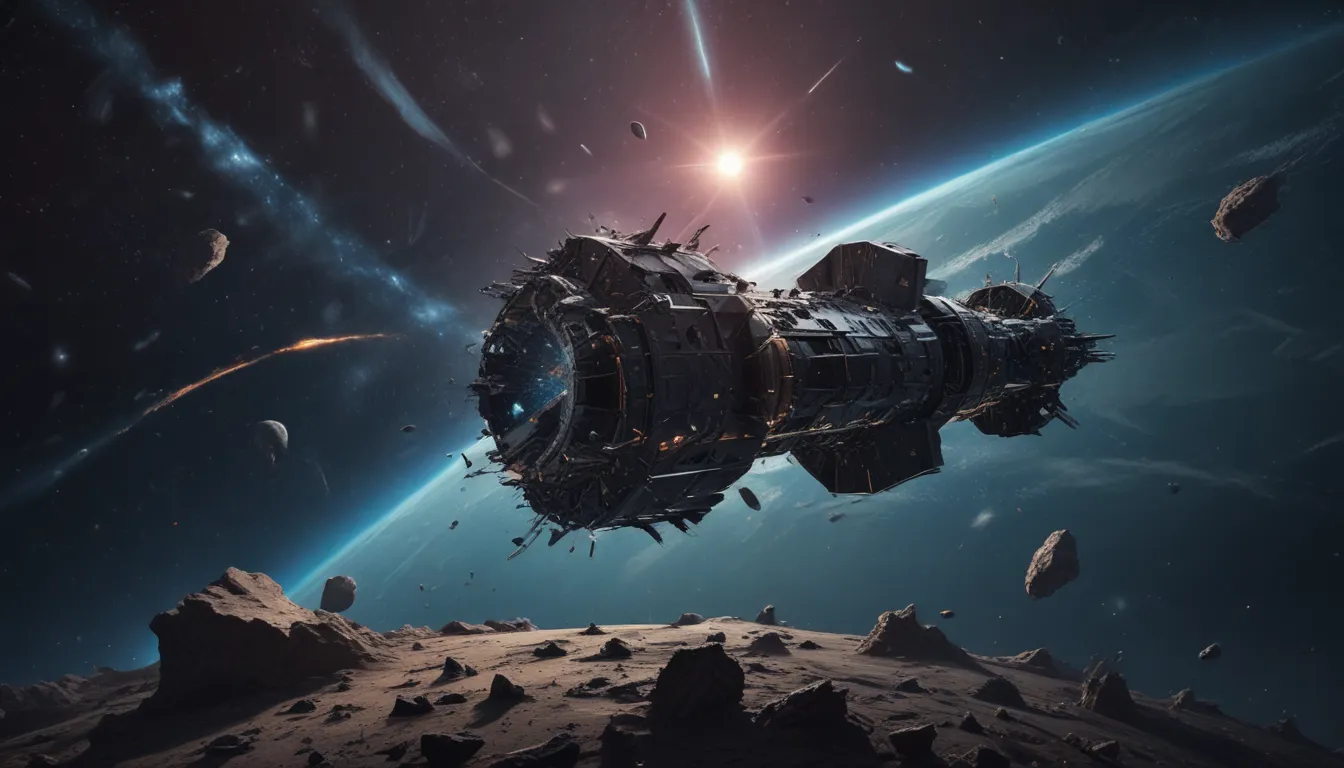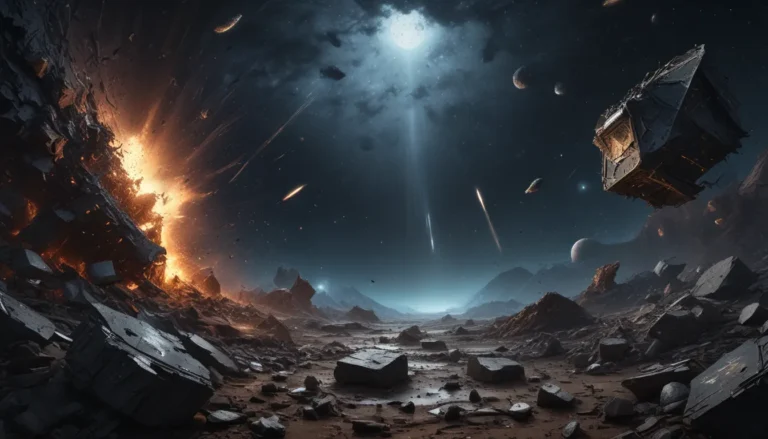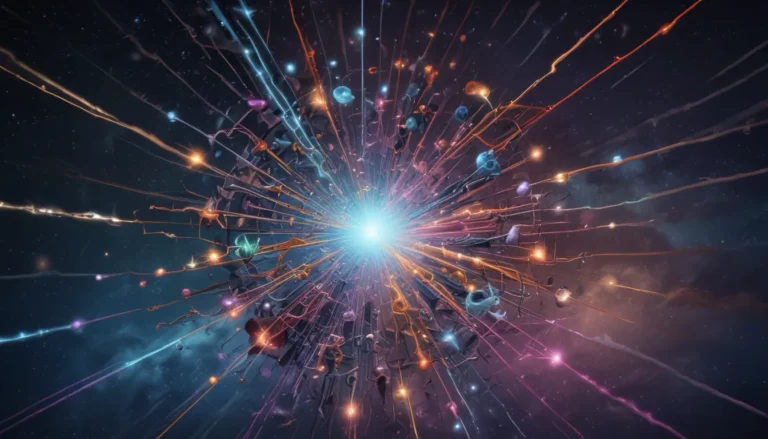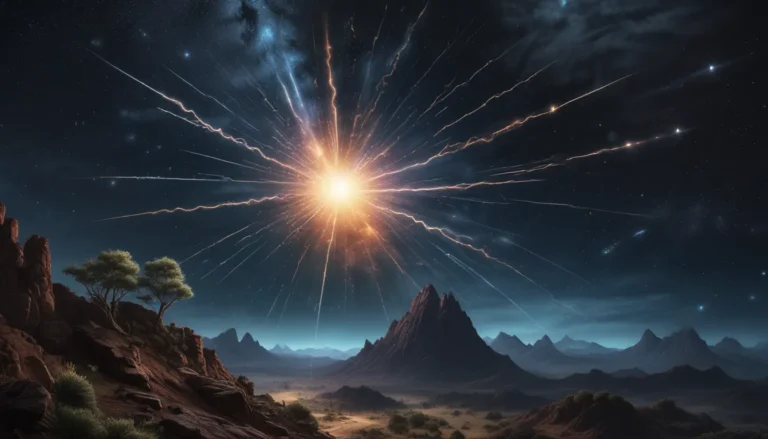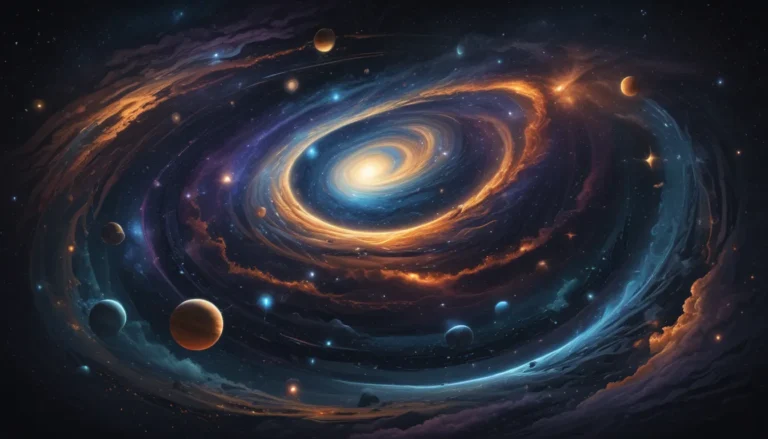The pictures we use in our articles might not show exactly what the words say. We choose these pictures to make you interested in reading more. The pictures work together with the words but don’t take their place. The words still tell you the important facts.
Space debris collisions may seem like a plot from a sci-fi movie, but in reality, they are a growing concern in the realm of astronomy and space exploration. As our interest in space and reliance on satellite technology flourish, so does the swarm of debris surrounding our planet. From derelict satellites to spent rocket stages and remnants of past collisions, space debris poses a substantial threat to human activities in space and the future of space exploration.
In this article, we will uncover 15 astonishing facts about space debris collisions that will not only leave you in awe but also provide a better understanding of the hurdles we encounter as we delve deeper into the cosmos. Get ready to be captivated by the sheer numbers of space debris objects and the potential repercussions of uncontrolled collisions, shedding light on the hidden dangers looming above us.
The Growing Population of Space Debris
The number of space debris objects orbiting the Earth continues to rise exponentially, presenting a significant threat to satellites, spacecraft, and even the International Space Station.
Small But Mighty: The Impact of Size
Even the tiniest space debris, traveling at high speeds, can inflict severe damage on satellites due to their kinetic energy.
Unraveling the Kessler Syndrome
The Kessler Syndrome postulates a scenario where the density of space debris is so intense that collisions between objects could trigger a domino effect, resulting in an uncontrollable chain reaction of collisions.
Vulnerabilities for Astronauts in Space
Astronauts conducting spacewalks outside the spacecraft face a risk of being hit by minute debris hurtling at incredible velocities, underscoring the gravity of space debris collisions for human space exploration.
Vigilance through Tracking and Monitoring
Space agencies worldwide meticulously track and monitor space debris using radar systems and telescopes to anticipate potential collisions and safeguard active satellites.
Mitigating Debris: Guidelines in Place
International entities like the United Nations Office for Outer Space Affairs have laid down guidelines to promote practices that reduce the creation and impact of space debris, aiming to mitigate the risks associated with orbital clutter.
The Financial Toll of Space Debris
The proliferation of space debris not only jeopardizes space missions but also imposes substantial financial burdens on satellite operators who must implement additional measures to safeguard their assets.
The Unpredictability of Collisions
Despite tracking endeavors, accurately predicting space debris collisions remains a challenge due to the vast number of orbiting objects and their ever-changing trajectories.
The Origins of Space Debris
Space debris comprises various objects, including spent rocket stages, defunct satellites, discarded equipment, and fragments from satellite collisions or explosions.
The Impact of Hypervelocity Collisions
Space debris collides with other objects at hypervelocity, with impacts occurring at speeds exceeding 17,500 miles per hour (28,000 kilometers per hour).
Posing a Threat to Future Exploration
The accumulation of space debris poses a potential impediment to future space exploration, heightening the risk of collisions and potentially restricting access to certain orbits.
Removing Debris Actively
Efforts are underway to develop technologies for active debris removal, utilizing methods such as netting, harpooning, and robotic arms to capture and deorbit space debris.
Managing Space Traffic
Space agencies and international organizations are exploring the development of space traffic management systems to coordinate spacecraft and satellite operations, reducing the likelihood of space debris collisions.
The Challenge of Debris Removal
Removing existing space debris from orbit is a laborious and intricate process that necessitates international cooperation and advanced technology.
Innovating for the Future
Scientists and engineers are actively researching innovative strategies to mitigate space debris, including concepts like self-destructing satellites and materials that disintegrate upon reentry.
In Closing
In conclusion, the issue of space debris collisions poses a substantial concern for space agencies and astronomers alike. The accumulation of space debris presents a serious threat to satellites, spacecraft, and the International Space Station. As highlighted by the 15 astounding facts discussed in this article, the problem is more complex and perilous than one might initially perceive. From the staggering number of debris particles encircling Earth to the staggering speeds at which they travel, the hazards they pose to our space endeavors are evident. The potential for catastrophic collisions and the ensuing proliferation of more debris underscore the urgent need for effective debris mitigation measures. Thankfully, space agencies worldwide are actively engaged in devising solutions to combat this escalating problem, whether by developing debris removal technologies or enforcing stricter regulations for satellite operators. As we continue our exploration and utilization of outer space, it is imperative that we prioritize the sustainability and cleanliness of our orbital environment. By comprehending the astonishing facts about space debris collisions, we can raise awareness and contribute to the preservation of our precious cosmic domain.
FAQs on Space Debris Collisions
Q: What is space debris?
A: Space debris refers to man-made objects orbiting Earth that no longer serve any useful purpose, including defunct satellites, spent rocket stages, and remnants from past satellite collisions.
Q: How does space debris form?
A: Space debris primarily arises from human activities in space, such as satellite launches, operational activities, and accidents, leading to the fragmentation and dispersion of objects.
Q: Why are space debris collisions concerning?
A: Space debris colliding with active satellites or spacecraft can cause significant damage or destruction, potentially initiating a chain reaction known as the Kessler Syndrome, posing a severe threat to future space missions.
Q: How common are space debris collisions?
A: While space debris collisions are rare, several notable incidents have occurred. With the increasing number of objects in space, the risk of collisions grows, necessitating mitigation to ensure the long-term sustainability of space activities.
Q: How do we monitor and track space debris?
A: Space agencies like NASA and ESA employ tracking systems and ground-based radars to monitor and track space debris, enabling the prediction of potential collisions and facilitating evasive actions when needed.
Q: Can space debris be removed?
A: Yes, ongoing efforts are focused on developing technologies for the removal of space debris. Ideas include using robotic spacecraft to capture and deorbit debris or designing satellites with self-destruct capabilities to reduce the accumulation of space junk.
Q: How can individuals contribute to the solution?
A: Individuals can support space agencies' initiatives for debris mitigation and raise awareness about the issue. Responsible disposal of electronics and waste reduction on Earth can indirectly aid in mitigating the creation of space debris.
Q: Are there international regulations on space debris?
A: Yes, international guidelines and agreements, like the Space Debris Mitigation Guidelines, offer recommendations for the safe and sustainable use of outer space. Some countries have also implemented national regulations to address the challenge of space debris.
Q: What are the potential implications of ignoring space debris collisions?
A: Neglecting to address space debris collisions could result in an orbit cluttered with enough debris to significantly impede or even prevent space activities like satellite launches and exploration.
Q: How can space agencies prevent space debris collisions?
A: Space agencies implement measures such as meticulous mission planning, satellite disposal protocols, and satellite design strategies to minimize debris production. International cooperation and compliance with guidelines are vital for the efficacy of these efforts.
By delving into the complexities of space debris collisions, we can appreciate the significance of collision avoidance strategies and impact analysis methods in reducing risks. Exploring the world of space debris impact analysis unveils innovative approaches to assessing potential damage and crafting robust protective measures. By expanding your knowledge in these domains, you gain a deeper insight into the challenges and solutions in safeguarding our cosmic pursuits.
Thank you for Exploring with Us
Our dedication to providing reliable and engaging content underpins our mission. Each fact shared on our platform stems from contributors like you, offering diverse insights and knowledge. To ensure the utmost accuracy and credibility, our diligent editors meticulously review each submission, guaranteeing that the information we provide is not only captivating but trustworthy. Trust in our commitment to excellence and authenticity as you embark on your exploration and learning journey.
